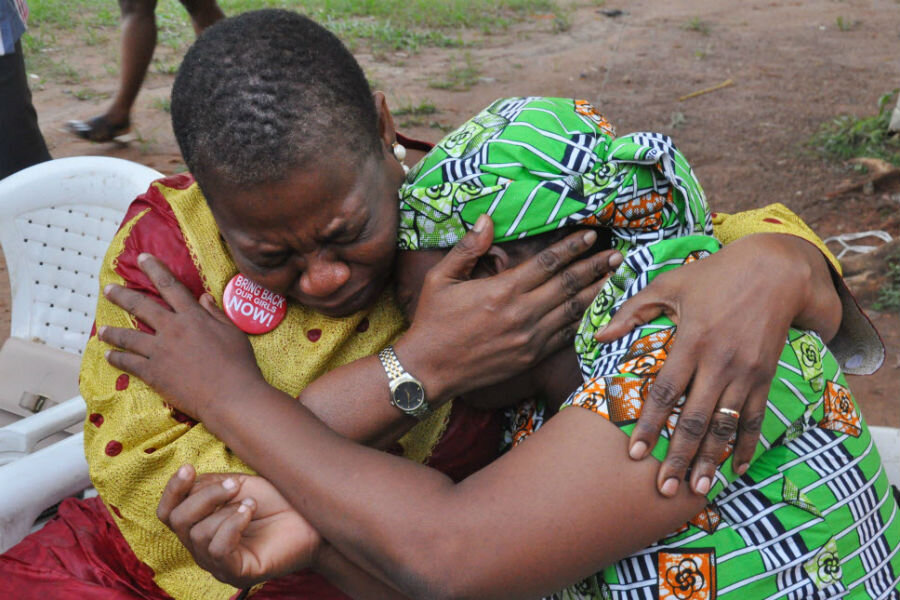Why did Boko Haram release video of kidnapped Chibok girls?
Loading...
A new video has surfaced of the schoolgirls kidnapped from Chibok, Nigeria, two years ago by the terrorist group Boko Haram. In the video, a masked man with a gun tells the Nigerian government that the girls will only be released if the government frees imprisoned Boko Haram fighters.
It's intended as a show of force, meant to highlight the government's inability to rescue the girls. But it also points to weakness and division within the terrorist group itself, say observers.
Boko Haram has encountered a shift in leadership in recent weeks. Abubakar Shekau, the leader of the group, made headlines last year as rumors that he was dead or replaced after a long period of silence. When Mr. Shekau eventually resurfaced in various recordings, Boko Haram started to change. Despite Shekau's preference for autonomy from other jihadist groups, Boko Haram pledged allegiance to the Islamic State last year and renamed itself Islamic State's West Africa Province (ISWAP), according to the International Business Times.
This allegiance seems to have caused some turmoil in the group, as various factions split off from the group, with international analysts questioning the strength of Shekau's leadership.
Then, earlier this month IS announced that Boko Haram had a new leader, Abu Musab al-Barnawi, according to The Guardian. In a recording, a man claiming to be Shekau railed against the decision, calling Mr. al-Barnawi an "infidel" preaching "false creeds."
The recent video of the kidnapped schoolgirls seems to be indicative of a major fracture in the organization. Despite IS-sanctioned leadership of al-Barnawi, the video is believed to come from Shekau.
Security analyst Ryan Cummings pointed out to The Guardian that the video "refers to Boko Haram by their traditional name," rather than ISWAP. This would indicate that Shekau's faction is holding the girls.
The willingness to use the girls to trade for imprisoned fighters is another indication that Boko Haram has split, since IS is against any form of negotiation or dialogue with the Nigerian government.
David Otto, chief executive of global security provider TGS Intelligence Consultants, told the International Business Times that the video could be a statement by Shekau that he is still in power despite what appears to be a major fracture within Boko Haram. "This is a strategy. These girls had been spread around different cells under the control of Abubakar [Shekau] at the time of abduction – with the current factional split it is likely that some of them are no longer under his control. [Shekau] is showing desperation and signs of distress."
The video also provides some hope to relatives and friends of those kidnapped two years ago, with only two other videos showing evidence that at least a number of the victims are still alive.
There is no word yet on whether the government of Nigeria is planning to go through with an exchange of prisoners as demanded in the video.








